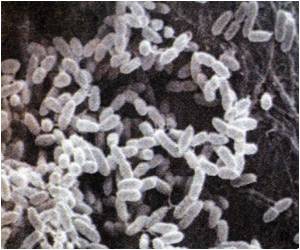A screen has been developed by scientists with the University of Exeter to isolate the virulent parts of the gene structures of pathogenic bacteria.

“By looking at the results from these tests it is possible to determine which parts of a pathogen’s genetic code allow it to override immune systems,” said Dr Andrea Dowling, from the Centre for Ecology and Conservation at the Exeter university’s Cornwall Campus.
“From there we can focus in on those key areas to find out how the pathogen works and how we can develop vaccines. The screen allows us to study and tackle the causes of disease and infection much quicker than other methods.”
The screen has been used by Dr Dowling and other researchers at Exeter to look at genes in the important pathogen, Burkholderia pseudomallei**, which causes the potentially deadly human disease, melioidosis. The research is published in the journal, PLoS ONE.
Burkholderia appears to be able to infect man directly from the environment via cuts and grazes. Normally any invading bacteria would be consumed by the body’s immune system, but Burkholderia bacteria seem to resist being eaten and can spread to other parts of the body in a very nasty infection.
Almost half of all human diseases are caused by pathogenic bacteria. Pathogens produce symptoms of disease by disrupting the normal cellular processes of their host by producing agents known as ‘virulence factors’. Virulence factors can allow the bacteria to adhere, invade, replicate within and/or kill their host cells and tissues, allowing the pathogen to establish infection. Understanding how these virulence factors work enhances ability to combat disease.
Advertisement
Using the screen they developed, the researchers were able to isolate the unique parts of Burkholderia‘s genetic code which could be responsible for its resistance to the human immune system.
Advertisement
“We can then study the mechanism for these factors using microbiological, cellular and biochemical techniques to see whether disrupting the virulence factor reduces the abilities of this bacteria to overcome the immune system.”
Professor Richard Ffrench-Constant, a co-author of the research, said: “Knowledge gained from this research provides essential insights into how this poorly understood, but extremely serious human pathogen works to cause disease, and, crucially, it helps us identify candidates for the development of much needed vaccines.”
The techniques used for this research are not only important in looking at Burkholderia, but can also be used on many other pathogens.
This work was supported by Biotechnology and Biological Sciences Research Council (BBSRC) and N.R.W., and by the European Community Seventh Framework Programme.
Source-Medindia






